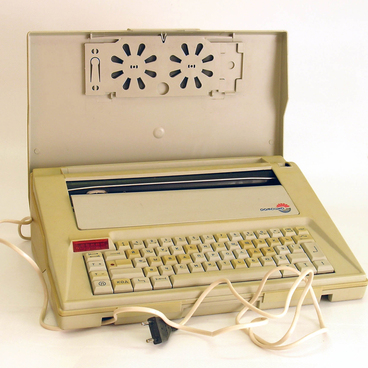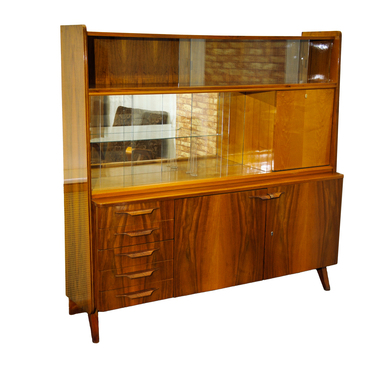In the 1930s, a common trend was established for the USSR architecture, household design and interior design, which was called the “Stalinist Empire style”. It combined elements of the Baroque, the imperial style of the Napoleon I era and late classicism, and its main characteristics were monumentality and solemnity.
The most widespread variant of bookcases were high two-leaved cabinets with glass swing doors. Sometimes a fabric drapery was hung on the inside on a decorative tuck. It protected books from dust and hid them from prying eyes. Stalin’s oak cabinets were very strong and impressive in size.
The furniture fashion changed only in the Khrushchev era. In the late 1950s, panel houses with small-sized apartments called “Khrushchevki” appeared, and minimalism began to prevail in household and industrial design. This style was based on small sizes, simple shapes and light materials. Bookcases became lower, and massive doors were replaced with glass ones.
In the 1950s, the Kalashnikovs received a separate apartment and bought a Czechoslovak furniture set for a housewarming party. Apart from the bookcase, it also included a sideboard, a table, chairs, armchairs, a wardrobe, bedside tables, and a bed sideboard.
Kalashnikov’s colleague Livady Koryakovtsev recalled the following about that apartment,
The most widespread variant of bookcases were high two-leaved cabinets with glass swing doors. Sometimes a fabric drapery was hung on the inside on a decorative tuck. It protected books from dust and hid them from prying eyes. Stalin’s oak cabinets were very strong and impressive in size.
The furniture fashion changed only in the Khrushchev era. In the late 1950s, panel houses with small-sized apartments called “Khrushchevki” appeared, and minimalism began to prevail in household and industrial design. This style was based on small sizes, simple shapes and light materials. Bookcases became lower, and massive doors were replaced with glass ones.
In the 1950s, the Kalashnikovs received a separate apartment and bought a Czechoslovak furniture set for a housewarming party. Apart from the bookcase, it also included a sideboard, a table, chairs, armchairs, a wardrobe, bedside tables, and a bed sideboard.
Kalashnikov’s colleague Livady Koryakovtsev recalled the following about that apartment,



